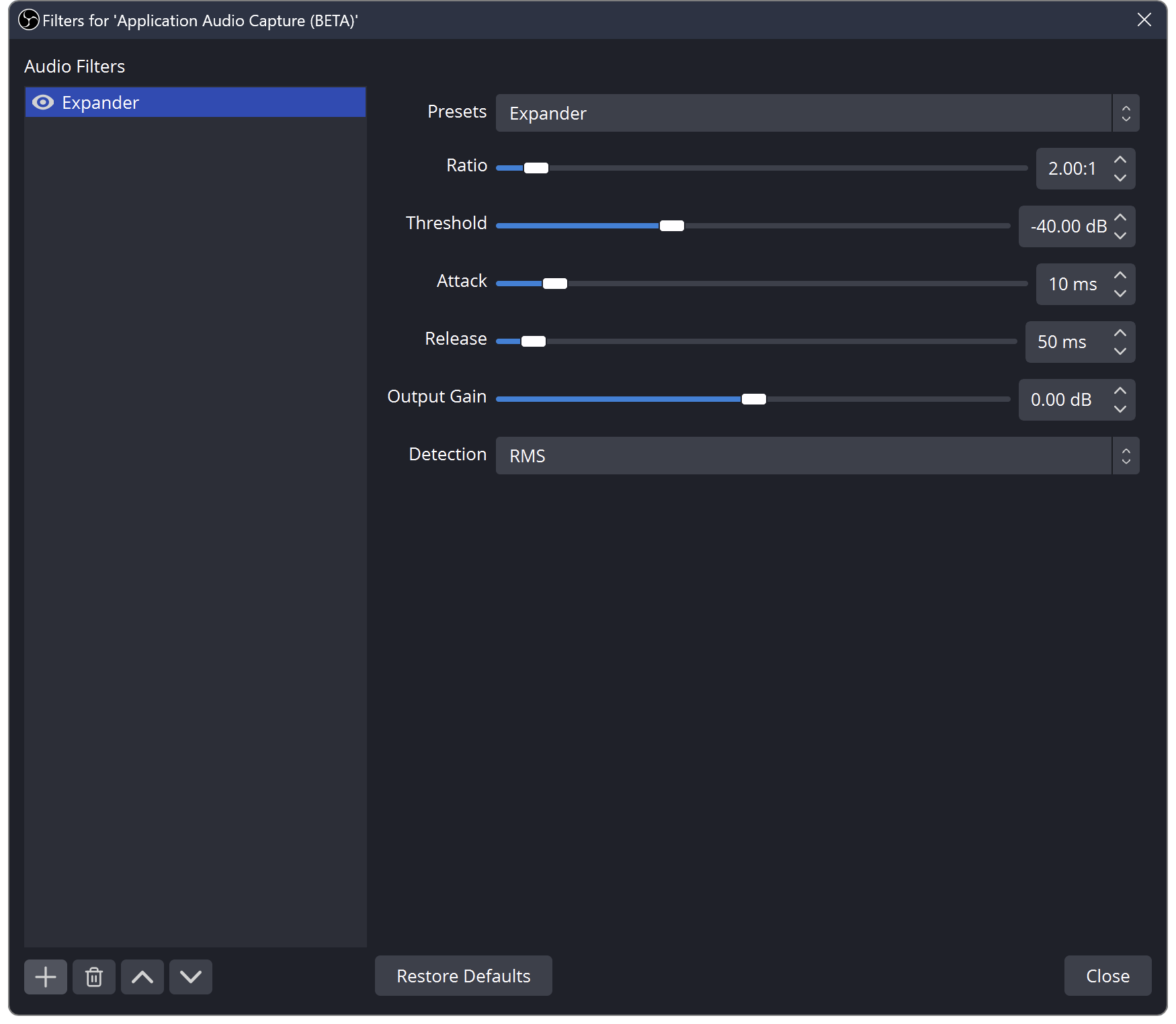OBS
Open Broadcaster Software®️
Expander Filter
Expander
| Windows | macOS | Linux |
|---|---|---|
| ✅ Available | ✅ Available | ✅ Available |

Description
An expander can be used to reduce background noise such as computer fans, mouse/keyboard clicks, breathing and unwanted mouth noises. An expander reduces the level of an audio signal by applying gain reduction, similar to a compressor but below the threshold instead of above it.
An expander can be used in place of a gate for noise reduction, they can produce a smoother open and close due to having an adjustable ratio whereas a gate is a fixed.
In short, an expander makes quiet sounds quieter and typically would be placed near the end of your filter chain, after any compression/other effects but before a Limiter.
Presets
- Expander: Low ratio and release time, good for light noise reduction
- Gate: High ratio and release time, will gain reduce a signal similar to a gate
Detection
- RMS: Averages the input level measurement over the last 10ms to reduce the sensitivity of the threshold detection, helps smooth out and prevent the expander from opening due to quick little peaks of noise
- Peak: Input level measurement is not averaged over time, expander is quicker to react to peak level changes
Properties
| Property | Description | Default |
|---|---|---|
| Presets | Defines some default values to use for the Ratio and Release time | Expander |
| Ratio | The amount of expansion or gain reduction to apply to a signal that is below the threshold. A lower ratio such as 2:1 is good for light noise reduction, a higher ratio such as 10:1 will completely gain reduce a signal. A nice balance is 4:1, this should provide an adequate amount of gain reduction without fully gating the signal | 2.00:1 |
| Threshold | Once the input reaches this level the expander will stop gain reducing the signal. Adjust the threshold until the noise you are trying to reduce is gone, but don't go too far or your voice will begin to get cut off | -40.00 dB |
| Attack | How quickly, in milliseconds, you want the expander to stop gain reducing or open once the threshold is exceeded. An attack between 5-10ms is recommended | 10 ms |
| Release | How quickly, in milliseconds, you want the expander to reach full gain reduction or close once the input drops below the threshold. A release between 50-120ms is recommended | 50 ms |
| Output Gain | Increases the output level of the expander by applying gain, generally not needed but can be used to increase your microphone level before outputting it | 0.00 dB |
| Detection | Changes how the input level is measured, affecting the sensitivity of the threshold detection. RMS is recommended | RMS |